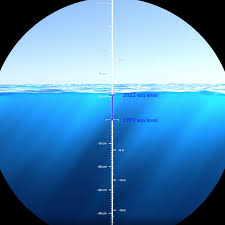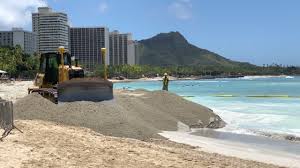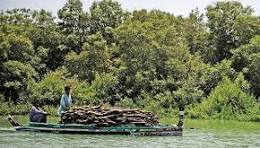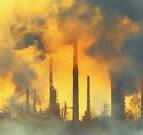Sea Level Rise and Coastal Erosion: Challenges in the 21st Century

Sea level rise and coastal erosion are pressing issues that have garnered significant attention in recent years. The latest report from the Intergovernmental Panel on Climate Change (IPCC) highlights the accelerating pace of sea level rise and its long-term implications. This article delves into the causes, impacts, and potential solutions to these challenges, drawing on the latest scientific findings.https://mrpo.pk/deforestation/
Causes of Sea Level Rise
Sea level rise is primarily driven by two factors: thermal expansion and the melting of ice sheets and glaciers. As global temperatures increase, seawater expands, contributing to higher sea levels. Additionally, the melting of ice in Greenland, Antarctica, and other regions adds vast amounts of water to the oceans1.
Accelerating Sea Level Rise

The IPCC report underscores that sea level rise is not only ongoing but accelerating. Human activities, particularly the emission of greenhouse gases, have significantly contributed to this trend. The report projects that sea levels could rise by up to 1 meter by the end of the century if current emission rates continue2.
Impacts on Coastal Areas
The consequences of rising sea levels are profound, particularly for coastal regions. Increased flooding, more severe storm surges, and accelerated coastal erosion are some of the immediate impacts. Low-lying areas, including many small island nations and coastal cities, are at heightened risk. These changes threaten infrastructure, ecosystems, and human livelihoods3.
Coastal Erosion
Coastal erosion, the process by which coastlines are worn away by natural forces such as waves and currents, is exacerbated by rising sea levels. As sea levels rise, the frequency and intensity of coastal erosion increase, leading to the loss of land and habitats. This process can have devastating effects on coastal communities, including the displacement of populations and the loss of valuable land4.
Long-Term Projections
The IPCC report indicates that sea level rise will continue for centuries, even if greenhouse gas emissions are significantly reduced. This long-term perspective highlights the need for sustained and adaptive strategies to manage the impacts of sea level rise and coastal erosion2.
Adaptation and Mitigation Strategies
Addressing the challenges of sea level rise and coastal erosion requires a multifaceted approach. Key strategies include:
- Building Coastal Defences: Constructing seawalls, levees, and other barriers to protect against flooding and erosion.
- Restoring Natural Buffers: Enhancing natural coastal features such as mangroves, coral reefs, and wetlands that can absorb wave energy and reduce erosion.

Mangroves - Implementing Sustainable Land Use Practices: Managing coastal development to minimise vulnerability and promote resilience.
- Reducing Greenhouse Gas Emissions: Mitigating climate change by transitioning to renewable energy sources and improving energy efficiency5.

Sea level rise and coastal erosion are critical issues that demand urgent attention and action. The latest IPCC report provides a stark reminder of the accelerating pace of these changes and their long-term implications. By adopting comprehensive adaptation and mitigation strategies, we can better protect our coastal communities and ecosystems from the impacts of rising seas.
Sea level rise has several significant impacts on coastal ecosystems, affecting both the environment and the species that inhabit these areas. Here are some of the key impacts:
- Habitat Loss and Alteration
- Wetland Flooding: Rising sea levels can inundate wetlands, leading to the loss of these critical habitats. Wetlands are essential for biodiversity, providing breeding grounds for fish, birds, and other wildlife1.
- Erosion: Coastal erosion accelerates with higher sea levels, leading to the loss of beaches, dunes, and other coastal landforms2.
- Saltwater Intrusion
- Aquifers and Soil: Saltwater can infiltrate freshwater aquifers and agricultural soils, making them unsuitable for drinking water and crop production2.
- Estuaries: Increased salinity in estuaries can disrupt the delicate balance of these ecosystems, affecting species that rely on specific salinity levels1.
- Biodiversity and Species Displacement
- Loss of Habitat: Species that depend on coastal habitats, such as mangroves and coral reefs, may face habitat loss, leading to declines in their populations1.
- Migration: Some species may be forced to migrate to higher altitudes or latitudes, which can disrupt existing ecosystems and lead to conflicts with other species3.
- Increased Flooding and Storm Surges
- Flood Damage: Higher sea levels contribute to more frequent and severe flooding, which can damage coastal ecosystems and infrastructure4.
- Storm Surges: Rising sea levels exacerbate the impact of storm surges, leading to more extensive damage during extreme weather events4.
- Impact on Human Communities
- Displacement: Coastal communities may face displacement due to increased flooding and erosion, leading to social and economic challenges4.
- Economic Losses: The loss of coastal ecosystems can impact industries such as tourism, fishing, and agriculture, leading to significant economic losses4.
These impacts highlight the urgent need for adaptive strategies to protect coastal ecosystems and the communities that depend on them.
Communities can adopt various strategies to adapt to rising sea levels and mitigate the impacts on their environments and livelihoods. Here are some effective approaches:
- Building Coastal Defences
- Seawalls and Levees: Constructing physical barriers to protect against flooding and storm surges1.
- Floodgates and Barriers: Installing movable barriers that can be raised during high tides or storms1.
- Restoring Natural Buffers
- Mangroves and Wetlands: Planting and restoring mangroves, wetlands, and other natural buffers that absorb wave energy and reduce erosion2.
- Dunes and Reefs: Preserving and enhancing dunes and coral reefs to act as natural barriers2.
- Implementing Sustainable Land Use Practices
- Zoning Regulations: Enforcing zoning laws that prevent construction in high-risk areas3.
- Elevating Structures: Raising buildings and infrastructure to reduce flood damage1.
- Adopting Innovative Solutions
- Floating Cities: Developing floating structures and cities that can rise with sea levels4.
- Sponge Cities: Designing urban areas with permeable surfaces and green spaces to absorb excess water4.
- Community Engagement and Education
- Public Awareness Campaigns: Educating communities about the risks of sea level rise and the importance of adaptation measures5.
- Participatory Planning: Involving local communities in the planning and implementation of adaptation strategies5.
- Ecosystem-Based Adaptation
- Living Shorelines: Using natural materials and vegetation to stabilize coastlines and provide habitat for wildlife1.
- Blue Carbon Projects: Protecting and restoring coastal ecosystems that capture and store carbon, such as mangroves and seagrasses2.
- Planning for Managed Retreat
- Relocation Programs: Developing plans to relocate communities from high-risk areas to safer locations1.
- Buyout Programs: Offering financial incentives for property owners to move away from vulnerable coastal zones1.
- Improving Infrastructure Resilience
- Climate-Resilient Infrastructure: Designing and building infrastructure that can withstand extreme weather events and rising sea levels6.
- Water Management Systems: Upgrading drainage and sewage systems to handle increased water levels6.
By combining these strategies, communities can enhance their resilience to rising sea levels and protect both their environments and livelihoods.
Coastal communities can take several proactive measures to prepare for extreme weather events, ensuring the safety and resilience of their populations and infrastructure. Here are some key strategies:
- Early Warning Systems
- Weather Forecasting: Implementing advanced weather forecasting systems to provide timely warnings about approaching storms and extreme weather1.
- Emergency Alerts: Utilizing emergency alert systems to inform residents about evacuation orders and safety measures1.
- Infrastructure Resilience
- Reinforcing Buildings: Strengthening buildings and infrastructure to withstand high winds and flooding2.
- Elevating Structures: Raising homes and critical infrastructure above expected flood levels2.
- Natural Defenses
- Restoring Wetlands and Mangroves: Enhancing natural barriers that can absorb storm surges and reduce wave energy3.
- Dune Restoration: Building and maintaining sand dunes to protect inland areas from storm surges3.
- Community Planning
- Zoning Regulations: Implementing zoning laws that restrict development in high-risk areas4.
- Evacuation Plans: Developing and regularly updating evacuation plans to ensure efficient and safe evacuations4.
- Public Education and Engagement
- Awareness Campaigns: Educating the public about the risks of extreme weather and the importance of preparedness1.
- Community Drills: Conducting regular emergency drills to ensure that residents know how to respond during an extreme weather event1.
- Emergency Services and Supplies
- Stockpiling Supplies: Ensuring that emergency supplies, such as food, water, and medical kits, are readily available2.
- Training First Responders: Providing specialized training for first responders to handle extreme weather emergencies effectively2.
- Climate Adaptation Strategies
- Managed Retreat: Planning for the relocation of communities from high-risk areas to safer locations4.
- Sustainable Development: Promoting sustainable development practices that reduce vulnerability to extreme weather4.
By implementing these strategies, coastal communities can better prepare for and mitigate the impacts of extreme weather events, enhancing their resilience and safety.
If you have any more questions or need further details, feel free to ask!
1: Tandem heat waves, storm surges increasingly batter coasts: Study 2: Coasts, Storms, and Sea Level Rise | U.S. Geological Survey 3: What threats do coastal communities face? – NOAA’s National Ocean Service 4: How cities are preparing for more extreme weather – The World Economic Forum
Sea level rise poses significant threats to small island nations, impacting their environments, economies, and communities. Here are some of the key effects:
1. Land Loss and Submersion
Many small island nations are low-lying, with much of their land just a few meters above sea level. Rising sea levels can lead to the submersion of entire islands, reducing habitable land and forcing communities to relocate1.
- Increased Coastal Erosion
Higher sea levels exacerbate coastal erosion, leading to the loss of beaches and coastal infrastructure. This erosion can undermine buildings, roads, and other critical infrastructure, making areas less safe and habitable2.
- Saltwater Intrusion
As sea levels rise, saltwater can infiltrate freshwater aquifers, contaminating drinking water supplies and agricultural land. This intrusion makes it difficult to grow crops and access clean water, threatening food and water security3.
- More Frequent and Severe Flooding
Small island nations are more vulnerable to flooding due to higher sea levels and increased storm surges. This flooding can damage homes, infrastructure, and ecosystems, leading to economic losses and displacement4.
- Impact on Ecosystems and Biodiversity
Rising sea levels can destroy critical habitats such as mangroves, coral reefs, and wetlands. These ecosystems are vital for biodiversity, providing shelter and food for various species. Their loss can lead to declines in fish populations and other marine life2.
- Economic and Social Challenges
The economic impact of sea level rise includes damage to tourism, fisheries, and agriculture, which are often key industries for small island nations. Socially, communities may face displacement, loss of cultural heritage, and increased health risks due to contaminated water and food shortages1.
- Legal and Sovereignty Issues
As islands become uninhabitable, there are complex legal and sovereignty issues to address, such as the rights of displaced populations and the status of submerged territories5.
These effects highlight the urgent need for adaptation and mitigation strategies to protect small island nations from the devastating impacts of sea level rise.
If you have any more questions or need further details, feel free to ask!
1: Climate change, rising seas may lead to the extinction of small island nations 2: SEA-LEVEL RISE AND SMALL ISLAND STATES: AN OVERVIEW – JSTOR 5: Legal Implications of Sea Level Rise for Small Island States Explored 4: Small islands are increasingly affected by climate change: IPCC report 3: Adapting to Sea Level Rise in Small Island Developing States
Sea level rise has significant impacts on large cities, particularly those located along coastlines. Here are some of the key effects:
- Increased Flooding
- Frequent Flooding: Higher sea levels lead to more frequent and severe flooding, especially during high tides and storms1. This can inundate streets, homes, and businesses, causing extensive damage.
- Storm Surges: Rising sea levels amplify the effects of storm surges, leading to more destructive flooding during hurricanes and other extreme weather events2.
- Infrastructure Damage
- Critical Infrastructure: Roads, bridges, subways, water supplies, power plants, and sewage treatment facilities are at risk of damage from rising waters3. This can disrupt essential services and lead to costly repairs.
- Erosion: Coastal erosion can undermine the foundations of buildings and infrastructure, making them unsafe and leading to potential collapses4.
- Economic Impacts
- Property Damage: Increased flooding and erosion can lead to significant property damage, reducing property values and increasing insurance costs1.
- Business Disruption: Flooding and infrastructure damage can disrupt local economies, affecting businesses and leading to job losses3.
- Displacement of Populations
- Forced Relocation: Rising sea levels can force residents to relocate from vulnerable areas, leading to displacement and social challenges4.
- Housing Shortages: The need to relocate large populations can strain housing markets and lead to shortages in safer areas4.
- Health Risks
- Water Contamination: Flooding can contaminate drinking water supplies with pollutants and saltwater, posing health risks to residents1.
- Increased Disease: Stagnant floodwaters can become breeding grounds for mosquitoes and other disease vectors, increasing the risk of illnesses1.
- Environmental Impacts
- Loss of Habitats: Rising sea levels can destroy coastal habitats, affecting local wildlife and biodiversity4.
- Wetland Degradation: Wetlands, which act as natural buffers against flooding, can be submerged and degraded, reducing their effectiveness4.
These impacts highlight the urgent need for cities to implement adaptive measures to mitigate the effects of sea level rise and protect their populations and infrastructure.
If you have any more questions or need further details, feel free to ask!
To safeguard Karachi from the impacts of rising sea levels, several immediate preventive measures can be implemented:
- Building Coastal Defences
- Seawalls and Levees: Constructing seawalls and levees to protect against flooding and storm surges1.
- Floodgates and Barriers: Installing floodgates and barriers to control water flow and prevent inundation during high tides and storms1.
- Restoring Natural Buffers
- Mangrove Restoration: Planting and restoring mangroves along the coastline to absorb wave energy and reduce erosion1.
- Wetland Conservation: Protecting and enhancing wetlands to act as natural barriers against flooding1.
- Implementing Sustainable Land Use Practices
- Zoning Regulations: Enforcing zoning laws that restrict development in high-risk coastal areas1.
- Elevating Structures: Raising buildings and infrastructure above expected flood levels to reduce damage1.
- Community Engagement and Education
- Public Awareness Campaigns: Educating the public about the risks of sea level rise and the importance of preparedness1.
- Emergency Drills: Conduct regular emergency drills to ensure that residents know how to respond during extreme weather events1.
- Improving Infrastructure Resilience
- Climate-Resilient Infrastructure: Designing and building infrastructure that can withstand extreme weather events and rising sea levels1.
- Water Management Systems: Upgrading drainage and sewage systems to handle increased water levels and prevent flooding1.
- Developing a Resilience Plan
- Integrated Coastal Management: Creating a comprehensive plan that includes both hard engineering solutions and nature-based approaches to manage coastal risks1.
- Collaboration with Experts: Working with scientists, engineers, and policymakers to develop evidence-based strategies for coastal protection23.
By implementing these measures, Karachi can enhance its resilience to rising sea levels and protect its communities and infrastructure from the adverse effects of climate change.
If you have any more questions or need further details, feel free to ask!
Source:
1: Sea Level Rise — IPCC 2: Climate change widespread, rapid, and intensifying – IPCC 4: On the frontline of the climate crisis: Atoll nations and coastal communities 5: Special Report on the Ocean and Cryosphere in a Changing Climate – IPCC
3: How is climate change impacting the world’s ocean 4: The Effects of Sea Level Rise Program (ESLR) – NCCOS Coastal Science 1: Coastal Ecosystem Response to Sea-level Rise – USGS 2: Sea level rise, facts and information – National Geographic
1: Sea Level Rise 101: The Causes, Effects, and Responses – NRDC 3: Climate Change: Global Sea Level | NOAA Climate.gov 4: Sea Level Rise – National Geographic Society 2: Sea Level Rise | MIT Climate Portal
2: Sea-Level Rise in Pakistan: Recommendations for Strengthening Evidence-Based Coastal Decision-Making 1: Time to develop resilience plan for Karachi against rising sea level 3: Review of Sea Level Rise Literature for Pakistan – Met Office
If you enjoyed this article, please like and share it with your friends, and don’t forget to share your personal experience/observations, thoughts and valuable suggestions to share for the education /benefit of others. Do subscribe to remain onboard and get more great content!

